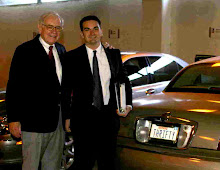The failure of invariance
Behavioral economists warn of the “failure of invariance,” a mistake that just about every investor will make from time to time. But the best investors are aware of it and minimize its impact on their decisions. This is the phenomenon of an investor answering a question under identical circumstances differently simply because the question was framed differently.
Example adapted from Nofsinger’s The Psychology of Investing: Suppose you bought a ticket to a show for $40, but when you arrive you discover you have lost the ticket. Would you pay $40 for another one? Now suppose you intend to buy the ticket at the door, but when you arrive you discover you have lost $40 while on your way. Do you still buy the ticket? If your answer is different under the two scenarios, then invariance has failed. The economic consequences are identical (you are out $80 but see the show) but because of the way the question is framed people often make different decisions. By the way, the above example has been proven empirically by financial economists.
The biggest name in behavioral finance is Professor Richard Thaler of the University of Chicago. He has done a number of really interesting studies on this topic. One of my favorites is when he asked one group of students, “How much would you be willing to pay to eliminate a 1-in-one-thousand chance of death?” He then asked a different group of students, “How much would you require to accept a 1-in-one-thousand chance of death.” On average students said the would only pay $200, but would require $50,000!
Of course the all-time best example is a tale from the tech bubble. It involves the equity “carve-out” of Palm Inc. from 3Com.
Palm was wholly owned by 3Com. In March 2000, 3Com had an IPO for a fractional stake in Palm. In this offering, 3Com sold 5% of Palm to the public. It also announced it intended to sell the remaining 95% after IRS approval. At that time, 3Com shareholders would get 1.5 shares of Palm for each share of 3Com. Immediately before the IPO, 3Com closed at $104. After the first day, Palm closed at $95, so 3Com should have correspondingly risen to $145. But it didn’t . Instead, it fell to $82. Thus, the market was effectively pricing 3Com’s non-Palm operations at negative $23 billion.
Thaler eventually published a paper based on this entitled “Can the Market Add and Subtract?”


1 Comments:
Thanks for letting me know - I'll be sure to buy a copy and then fire off the obligatory warning ... hopefully resulting in massive publicity for my blog ...
thanks again Andy
By Jay Walker, at 29 March, 2006 17:36
Jay Walker, at 29 March, 2006 17:36
Post a Comment
<< Home